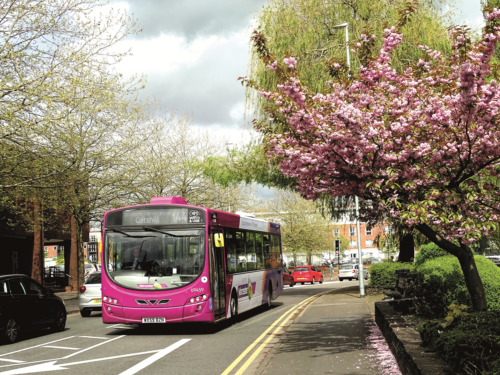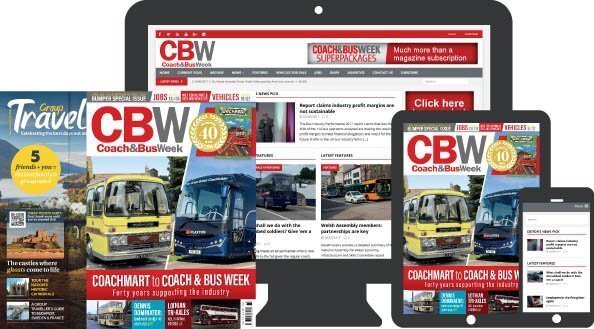
Whilst many county councils and operators are busy parading their new battery-powered fleets, not all areas of the UK have been so lucky with funding. Richard Sharman takes a look at the county of Worcestershire to see how things are progressing there
Surrounded by Gloucestershire, Shropshire, Staffordshire, the West Midlands, Warwickshire and its former non-metropolitan county twin Hereford, between 1974 and 1998 when it was abolished, Worcestershire is largely a rural county with a population of approximately 603,670 people. The largest conurbation is the City of Worcester, followed by the towns of Redditch, Kidderminster and Malvern. Given this, you would think that the county would boast a substantial bus network, but like many places in the UK, it has seen a vast number of changes and funding cuts
in recent years. But are things slowly turning around?
Midland Red to First
Historically speaking, if you say Worcester to any time-served busman, manager or enthusiast they will instantly think Midland Red West. If you are a little older you might think pre-deregulation Midland Red. In 2024, the only mention of Midland Red you will find in Worcester is restricted to the 25 millimetre tall First Midland Red Buses Ltd legal lettering on the side of the bus. These days the company forms part of the wider First West of England division that includes First Cymru and is headquartered in Bristol.
Unfortunately, the deregulation red and cream-liveried days of the Midland Red West of old are long gone. Some of you may remember that Midland Red West was once famed for its award winning thick timetable booklets of yesteryear that were nearly as big as an old-school Yellow Pages phone directory, showing just how many bus services it operated from depots in Kidderminster, Redditch, Worcester, Evesham and of course Hereford in its latter years.
Today, its hold on Worcestershire has been reduced to a single historic depot in Padmore Street, Worcester. Although it still has authorisation to operate a fleet of 265 vehicles from the depot in the centre of the city, the current fleet strength numbers 62 vehicles operating on a network of 56 registered public services, (including route variations) plus school, works and special event services.
The network is, as might be anticipated, centred around serving the City of Worcester with 20 and 30-series routes serving most large estates and the county’s large Worcestershire Royal Hospital. Frequencies vary, but the largest estates enjoy a bus every 10 minutes which drops them in the bus station located under the Crowngate Shopping Centre.
When it comes to inter urban links, big towns such as Great Malvern have seen a significant reductions in the number of buses, with frequency maintaining a strictly 30 minute headway throughout the day, with the last bus leaving Worcester at an early 1738hrs, no evening service on Friday and Saturday night and no service at all on a Sunday. This is a far cry from back in 2005 when a branded fleet was introduced using brand new Wrightbus StreetDecks, and services were frequent, operated late and at the weekend.
[…]By subscribing you will benefit from:
- Operator & Supplier Profiles
- Face-to-Face Interviews
- Lastest News
- Test Drives and Reviews
- Legal Updates
- Route Focus
- Industry Insider Opinions
- Passenger Perspective
- Vehicle Launches
- and much more!


